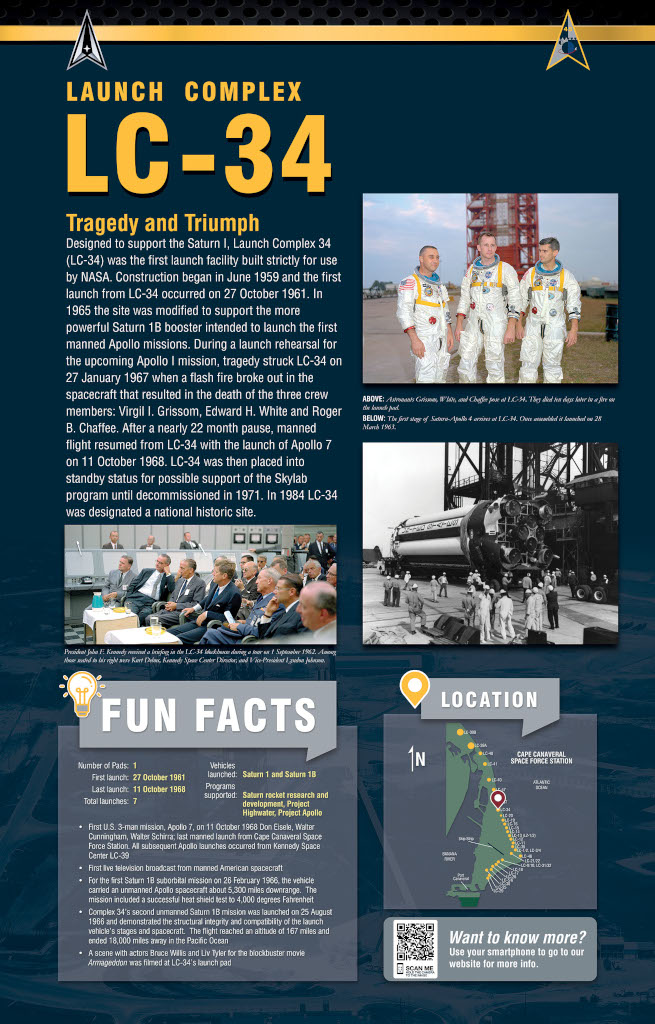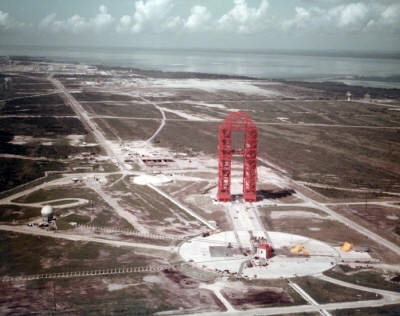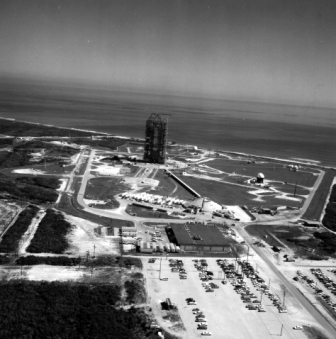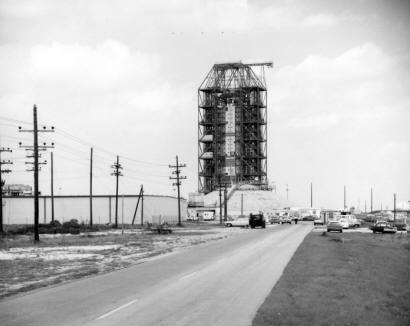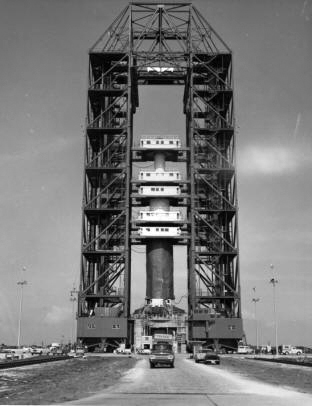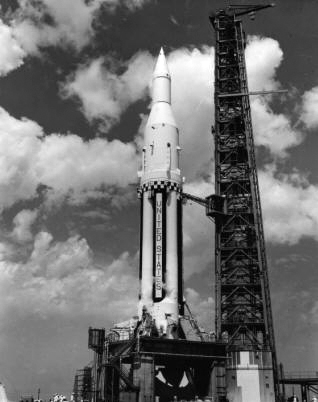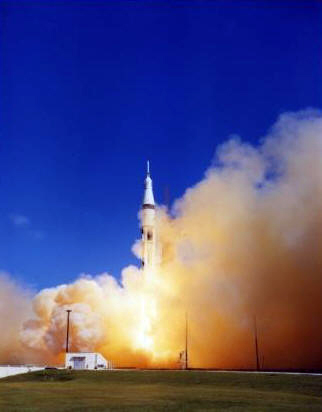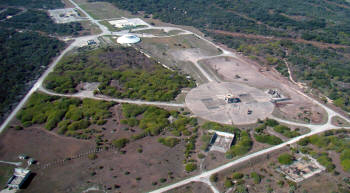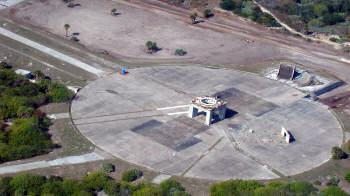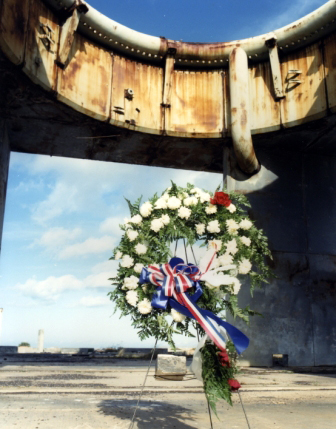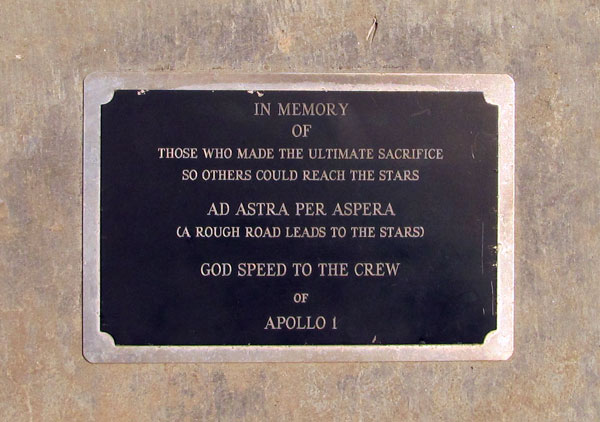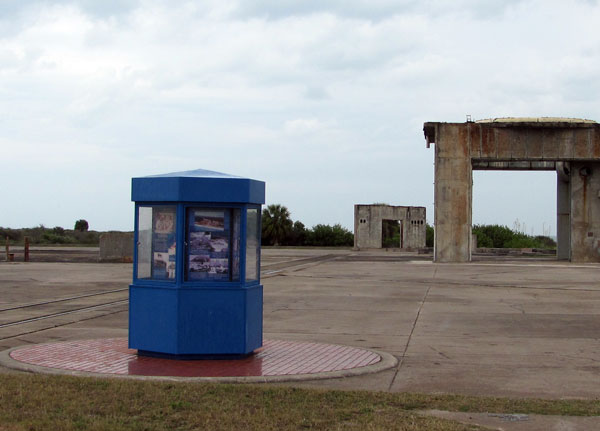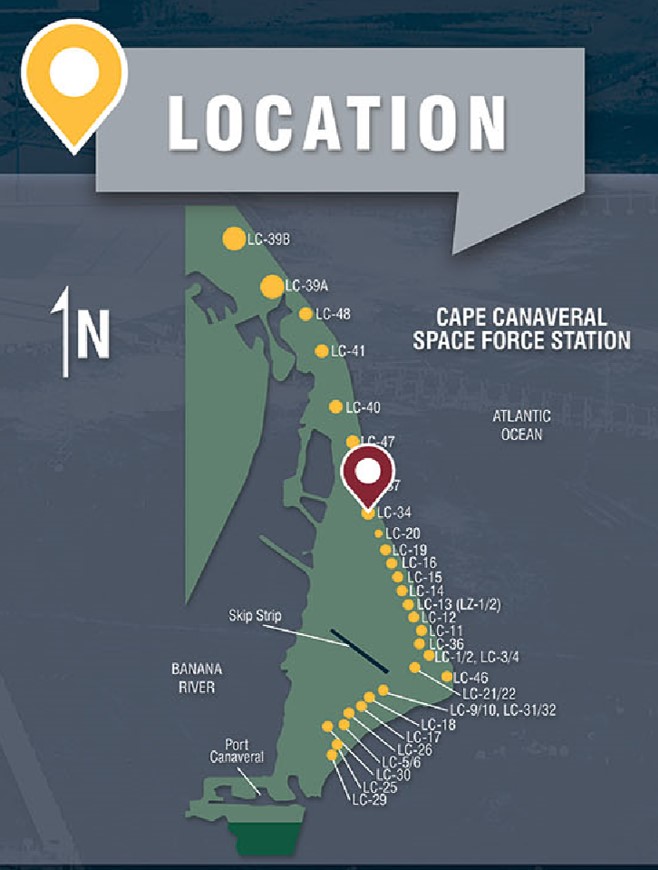
Photo Gallery
Historical Markers
Overview
Systems
Other Programs
- Apollo
Cost: $6,216,000 and by 1966 $25,340,000
Launch Complex 34 Highlights
- 3 June 1959 – Construction contract awarded
- 8 June 1959 – Construction began on the complex for a missile named the Juno V, under the direction of the Army Ballistic Missile Agency. The name was changed to Saturn in late 1959 and the program was transferred to NASA
- 11 August 1960 – Final inspection of the blockhouse. The blockhouse is about 1,000′ from the launch pad, 120′ in diameter, 30′ high and 5-7′ thick.
- February 1961 – Launch complex was occupied
- 26 March 1961 – The $4 million service tower was moved on its tracks for the first time. The launch pad consists of a reinforced concrete pad, 430′ in diameter and 8″ thick, launch pedestal 42′ square and 27′ high with a 26′ exhaust opening, umbilical tower 24′ square by 240′ high, and Mobile Service Tower, 70′ x 130′ base and 310′ high weighing 2,800 tons.
- 5 June 1961 – NASA accepted the complex
- January 1962 – U.S. Army Corps of Engineers completed construction
- 23 January 1962 – Contract was let to extend the height of the tower by 27′ to 240′ for Saturn IB
- Flame Deflector is 43′ long, 32′ wide and 21′ high, weighs 150 tons
- LOX tank 125,000 gallons, RP-1 storage consisted of two 30,000 gallon tanks, LH2 tank 125,000 gallons
- 1963 to 1965 – Launch complex was modified to support the Saturn IB
- 27 October 1961 to 11 October 1968 – Four Saturn I and three Saturn IB launched
- First four Saturn I missions were launched to test the propulsion and control systems
- 26 February 1966 – Launches of upgraded Saturn IB booster began
- 27 January 1967 – First manned Saturn IB Apollo test flight was scheduled for launch on 21 February 1967. Tragedy struck on 27 January 1967 at 1831 hours when a flash fire in the capsule killed astronauts Virgil I. Grissom, Edward H. White III and Roger B. Chaffee.
- 11 October 1968 – First manned Saturn IB Apollo launch, Apollo 7, the only manned Apollo launch from Cape Canaveral Air Force Station. The Apollo program continued from neighboring Kennedy Space Center Pads 39A and 39B.
- October 1968 – Held in standby status for possible use in the Skylab program.
- 1 January 1969 – Complex deactivated
- November 1971 – Complex mothballed
- April 1972 – Service structure scrapped
- A second launch pad, 34B, was scheduled to be built south of the current launch pad, however it was cancelled because it would have been 730 meters from Launch Complex 20. There was a safety concern. As a result, the Development Operations Division gave its approval for the Army Ballistic Missile Agency’s Missile Firing Lab to begin planning for Launch Complex 37 with two pads north of Launch Complex 34
Related Pages:
More Cape Canaveral Facilities